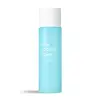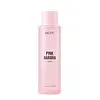What's inside
What's inside
 Key Ingredients
Key Ingredients

 Benefits
Benefits

 Concerns
Concerns

 Ingredients Side-by-side
Ingredients Side-by-side

Anastatica Hierochuntica Extract
AstringentWater
Skin ConditioningDipropylene Glycol
HumectantMethylpropanediol
SolventGlycerin
HumectantButylene Glycol
HumectantCarbomer
Emulsion StabilisingArginine
MaskingButyrospermum Parkii Butter
Skin ConditioningCaprylic/Capric Triglyceride
MaskingOlea Europaea Fruit Oil
MaskingHydrogenated Lecithin
EmulsifyingSqualane
EmollientDisodium EDTA
Xanthan Gum
EmulsifyingDipotassium Glycyrrhizate
HumectantSodium Hyaluronate
HumectantMelia Azadirachta Leaf Extract
Skin ConditioningMelia Azadirachta Flower Extract
Skin ConditioningCoccinia Indica Fruit Extract
Skin ConditioningSalix Alba Bark Extract
AstringentBambusa Vulgaris Water
Skin ConditioningAloe Barbadensis Flower Extract
EmollientCeramide NP
Skin ConditioningCholesterol
EmollientHydrolyzed Hyaluronic Acid
HumectantSolanum Melongena Fruit Extract
Skin ConditioningPhytosphingosine
Skin ConditioningOcimum Sanctum Leaf Extract
Skin ConditioningCurcuma Longa Root Extract
MaskingCorallina Officinalis Extract
Skin ConditioningSodium Acetylated Hyaluronate
HumectantAnastatica Hierochuntica Extract, Water, Dipropylene Glycol, Methylpropanediol, Glycerin, Butylene Glycol, Carbomer, Arginine, Butyrospermum Parkii Butter, Caprylic/Capric Triglyceride, Olea Europaea Fruit Oil, Hydrogenated Lecithin, Squalane, Disodium EDTA, Xanthan Gum, Dipotassium Glycyrrhizate, Sodium Hyaluronate, Melia Azadirachta Leaf Extract, Melia Azadirachta Flower Extract, Coccinia Indica Fruit Extract, Salix Alba Bark Extract, Bambusa Vulgaris Water, Aloe Barbadensis Flower Extract, Ceramide NP, Cholesterol, Hydrolyzed Hyaluronic Acid, Solanum Melongena Fruit Extract, Phytosphingosine, Ocimum Sanctum Leaf Extract, Curcuma Longa Root Extract, Corallina Officinalis Extract, Sodium Acetylated Hyaluronate
Citrullus Lanatus Fruit Extract
Skin ConditioningGlycerin
HumectantDipropylene Glycol
HumectantButylene Glycol
Humectant1,2-Hexanediol
Skin ConditioningIsopentyldiol
HumectantNiacinamide
SmoothingWater
Skin ConditioningBetaine
HumectantHydroxyethyl Urea
HumectantSodium Citrate
BufferingPropanediol
SolventAllantoin
Skin ConditioningPolyglyceryl-10 Laurate
Skin ConditioningCitric Acid
BufferingSalicylic Acid
MaskingEthylhexylglycerin
Skin ConditioningAdenosine
Skin ConditioningDisodium EDTA
Glyceryl Acrylate/Acrylic Acid Copolymer
HumectantLavandula Angustifolia Oil
MaskingCyanocobalamin
Skin ConditioningGlutathione
Sodium Ascorbyl Phosphate
AntioxidantTranexamic Acid
AstringentCalamine
AbsorbentMelaleuca Alternifolia Leaf Extract
PerfumingSodium Hyaluronate Crosspolymer
HumectantLactobacillus/Soybean Ferment Extract
Skin ConditioningHydrolyzed Glycosaminoglycans
HumectantDioscorea Japonica Root Extract
Skin ConditioningTremella Fuciformis Extract
HumectantHippophae Rhamnoides Fruit Extract
Skin ConditioningSodium Hyaluronate
HumectantBenzyl Glycol
SolventCentella Asiatica Extract
CleansingHydrolyzed Hyaluronic Acid
HumectantHyaluronic Acid
HumectantRaspberry Ketone
MaskingLinalool
PerfumingCitrullus Lanatus Fruit Extract, Glycerin, Dipropylene Glycol, Butylene Glycol, 1,2-Hexanediol, Isopentyldiol, Niacinamide, Water, Betaine, Hydroxyethyl Urea, Sodium Citrate, Propanediol, Allantoin, Polyglyceryl-10 Laurate, Citric Acid, Salicylic Acid, Ethylhexylglycerin, Adenosine, Disodium EDTA, Glyceryl Acrylate/Acrylic Acid Copolymer, Lavandula Angustifolia Oil, Cyanocobalamin, Glutathione, Sodium Ascorbyl Phosphate, Tranexamic Acid, Calamine, Melaleuca Alternifolia Leaf Extract, Sodium Hyaluronate Crosspolymer, Lactobacillus/Soybean Ferment Extract, Hydrolyzed Glycosaminoglycans, Dioscorea Japonica Root Extract, Tremella Fuciformis Extract, Hippophae Rhamnoides Fruit Extract, Sodium Hyaluronate, Benzyl Glycol, Centella Asiatica Extract, Hydrolyzed Hyaluronic Acid, Hyaluronic Acid, Raspberry Ketone, Linalool
Ingredients Explained
These ingredients are found in both products.
Ingredients higher up in an ingredient list are typically present in a larger amount.
Butylene Glycol (or BG) is used within cosmetic products for a few different reasons:
Overall, Butylene Glycol is a safe and well-rounded ingredient that works well with other ingredients.
Though this ingredient works well with most skin types, some people with sensitive skin may experience a reaction such as allergic rashes, closed comedones, or itchiness.
Learn more about Butylene GlycolDipropylene Glycol is a synthetically created humectant, stabilizer, and solvent.
This ingredient helps:
Dipropylene glycol is technically an alcohol, but it belongs to the glycol family (often considered part of the ‘good’ alcohols). This means it is hydrating and gentle on skin unlike drying solvent alcohols like denatured alcohol.
As a masking agent, Dipropylene Glycol can be used to cover the smell of other ingredients. However, it does not have a scent.
Studies show Dipropylene Glycol is considered safe to use in skincare.
Learn more about Dipropylene GlycolDisodium EDTA plays a role in making products more stable by aiding other preservatives.
It is a chelating agent, meaning it neutralizes metal ions that may be found in a product.
Disodium EDTA is a salt of edetic acid and is found to be safe in cosmetic ingredients.
Learn more about Disodium EDTAGlycerin is already naturally found in your skin. It helps moisturize and protect your skin.
A study from 2016 found glycerin to be more effective as a humectant than AHAs and hyaluronic acid.
As a humectant, it helps the skin stay hydrated by pulling moisture to your skin. The low molecular weight of glycerin allows it to pull moisture into the deeper layers of your skin.
Hydrated skin improves your skin barrier; Your skin barrier helps protect against irritants and bacteria.
Glycerin has also been found to have antimicrobial and antiviral properties. Due to these properties, glycerin is often used in wound and burn treatments.
In cosmetics, glycerin is usually derived from plants such as soybean or palm. However, it can also be sourced from animals, such as tallow or animal fat.
This ingredient is organic, colorless, odorless, and non-toxic.
Glycerin is the name for this ingredient in American English. British English uses Glycerol/Glycerine.
Learn more about GlycerinHydrolyzed Hyaluronic Acid is a form of hyaluronic acid. It is created by the hydrolysis of hyaluronic acid with a high molecular weight. Once created, Hydrolyzed Hyaluronic Acid has a low molecular weight.
Low molecular weight HA has been shown to hydrate and increase elasticity of the skin. Increasing elasticity is also associated with reduction of wrinkle depth.
One study found topical low molecular weight hyaluronic acid may be considered for the treatment of rosacea in the adult population. However, we always recommend speaking with a professional about your skin concerns.
Hyaluronic acids are a humectant. This means they draw moisture from the air. Hyaluronic acids help moisturize, soothe, and protect the skin.
Read more about other common forms of hyaluronic acid:
Learn more about Hydrolyzed Hyaluronic AcidSodium Hyaluronate is hyaluronic acid's salt form. It is commonly derived from the sodium salt of hyaluronic acid.
Like hyaluronic acid, it is great at holding water and acts as a humectant. This makes it a great skin hydrating ingredient.
Sodium Hyaluronate is naturally occurring in our bodies and is mostly found in eye fluid and joints.
These are some other common types of Hyaluronic Acid:
Learn more about Sodium HyaluronateWater. It's the most common cosmetic ingredient of all. You'll usually see it at the top of ingredient lists, meaning that it makes up the largest part of the product.
So why is it so popular? Water most often acts as a solvent - this means that it helps dissolve other ingredients into the formulation.
You'll also recognize water as that liquid we all need to stay alive. If you see this, drink a glass of water. Stay hydrated!
Learn more about Water